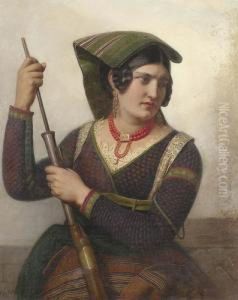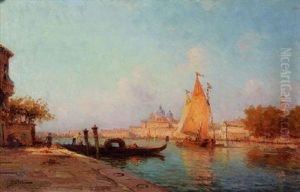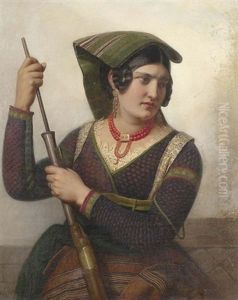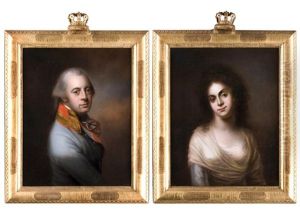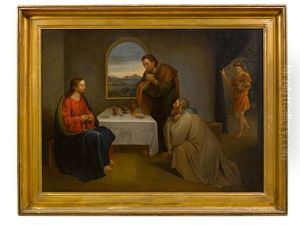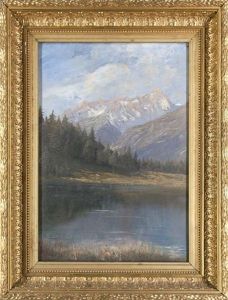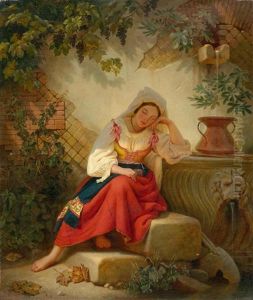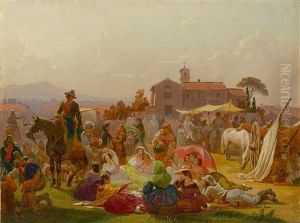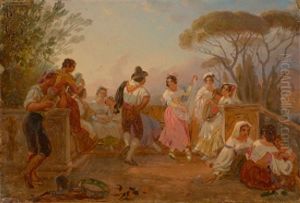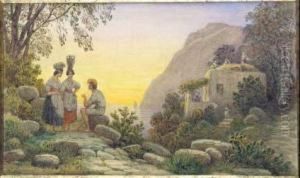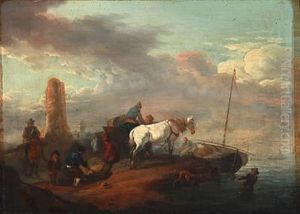Johann Conrad Zeller Paintings
Johann Conrad Zeller was a Swiss painter and draftsman, primarily recognized for his contributions to landscape painting and portraiture. Born on December 26, 1807, in Winterthur, Switzerland, Zeller showed an early aptitude for the arts. Unfortunately, there is limited documentation of his life, and he is often overshadowed by other artists of the period. However, his work remains an essential part of Swiss art history, reflecting the stylistic transitions of the 19th century.
Zeller received his initial training in his hometown before he moved to Munich, which was a major center for art and culture in the 19th century. It was there that he studied at the Academy of Fine Arts Munich, honing his skills and developing a keen sense of landscape and portraiture. Zeller's style was influenced by the Romantic movement, which emphasized emotion and individualism as well as glorification of the past and nature. His landscapes often depicted the Swiss countryside, imbued with a sense of natural beauty and a romanticized perspective.
In addition to his landscapes, Zeller was known for his portraits. He had the ability to capture the essence of his subjects with a realistic representation. His portraits are characterized by their detailed treatment and the psychological depth he was able to convey. This combination of landscape and portrait painting places Zeller within the broader context of European art of his time, which was increasingly concerned with the reflection of personal experience and the capturing of the natural world.
Despite his skill and contributions to the Swiss art scene, Johann Conrad Zeller did not achieve the same level of fame as some of his contemporaries. His work did garner recognition in his native Switzerland, but it was not until later that art historians began to appreciate the quality and significance of his oeuvre. Unfortunately, Zeller's life was cut short when he died on January 17, 1856. His legacy is preserved through his artworks which continue to be studied and admired for their contribution to the Romantic movement in Switzerland and their representation of 19th-century European art.
